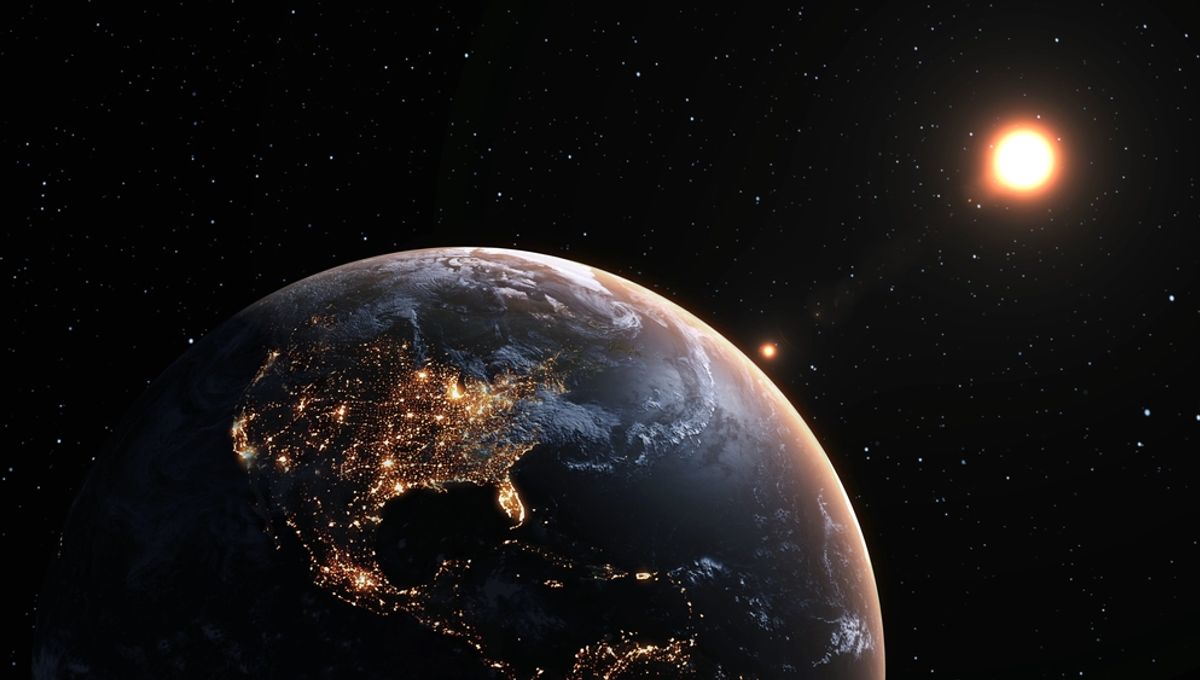
Diagrams and animations of planetary orbits are, in a way, lying to you a little bit, though it’s more accurate to say they’re simplifying things. They leave out the concept of barycenters so teachers don’t have to explain complex gravitational dynamics to kids still wrapping their heads around the fact that Earth isn’t the only planet.
The way you are taught about the orbits of the planets generally looks something like the below video.
But that’s the simplified version. While the Sun is by far the largest object in the Solar System, about 1,048 times the mass of Jupiter, gravity doesn’t work one way. Just as Earth pulls on you, you’re also pulling back on Earth (albeit much, much less).
“Kepler’s third law describes the relationship between the masses of two objects mutually revolving around each other and the determination of orbital parameters,” NASA explains.
“Consider a small star in orbit about a more massive one. Both stars actually revolve about a common center of mass, which is called the barycenter. This is true no matter what the size or mass of each of the objects involved. Measuring a star’s motion about its barycenter with a massive planet is one method that has been used to discover planetary systems associated with distant stars.”
For simplicity, we say that the planets orbit the Sun. However, the barycenter of the Solar System’s objects is usually near the Sun, given that it provides the most mass, but thanks to the orbits and influence of gas giants Jupiter and Saturn, it is rarely actually inside the Sun. The orbits look a little more like the below video from planetary astronomer and science communicator James O’Donoghue.
As a result, the Earth is not currently orbiting a point inside the Sun, as the barycenter is outside of it. We are orbiting that point in space, rather than the Sun.
Though the planets are generally talked about as orbiting the Sun’s center, that isn’t quite true, largely because of gas giant Jupiter’s influence.
“Jupiter is a lot larger than Earth. It has 318 times more mass. As a result, the barycenter of Jupiter and the sun isn’t in the center of the sun. It’s actually just outside the sun’s surface!” NASA explains. “Our entire solar system also has a barycenter. The sun, Earth, and all of the planets in the solar system orbit around this barycenter. It is the center of mass of every object in the solar system combined.”
This barycenter is rarely in the center of the Sun, and is often outside of the Sun’s surface.
The same is true of smaller objects, such as the planets and their moons. The Earth and Moon orbit a point around 5,000 kilometers (3,100 miles) from the center of the Earth, though this changes as the Moon moves further and further away from the Earth.
While these facts might not change your daily life (unless you’re an astrophysicist), they’re still fascinating, and a good reminder that most things are a bit more complex than what we learned in school.
An earlier version of this story was published in 2024.
Source Link: Why Earth’s Orbit Around The Sun Isn’t What You Think